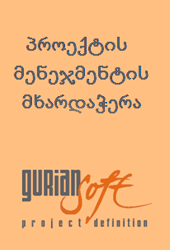Ukrainians and Byelorussians in Georgia
Settlement of Russians, Ukrainians and Byelorussians in Georgia was taking place approximately with the same conditions. Their colonization began from the beginning of XIX century, after annexation of Georgia with Russia. Primarily, military units were located in Tbilisi and in other towns. Mainly military persons ruled administrative institutions in the beginning and civil government with Russian personnel was created after that. We have the following picture of settlement ways of Russians, Ukrainians and Byelorussians during XIX century and beginning of XX century.
Here came military and civil officials, whose principal part settled advantageously in civil settlements. Spontaneous individual settlements of Russians and Ukrainians, representatives of different stratum of residents- cultural figures, workers, merchants, peasants and other, were very frequent in the period of capitalism. Among them were journalists, literary men, scientists, actors/actresses and other representatives of intelligentsia. Settlement of Russians and Ukrainians greatly strengthened in Georgia in the period of five years before war, as public economy of the republic was developing rapidly and demand on employees accordingly increased. It must be mentioned, that peasants and representatives of privileged social stratum were dominant among Russians who settled in Georgia in pre-Revolutionary period; but already in the soviet period, their principal part consisted of employees of industry and construction. Pursuant to this situation, majority preferred to settle in cities. According to the data of 1970, approximately 82,8% of Russians and Ukrainians, residing in Georgia, lived in cities.
Direction of external migration procedures noticeably changed in the period after the Second World War. First of all, this refers to Russians, Ukrainians and Byelorussians. Absolute and partial amount of the above mentioned nations, decreased in the republic during last decade of years. General amount of Russians and Ukrainians decreased by 43, 5 thousand, i.e. 9,5% (during 20 years, from 1959 to 1979). Their specific weight decreased in the whole population of Georgia from 11, 3 to 8,3 percentage, but if we take prolonged period-from the first years of soviet authority before the eighties of our century (1926-1979)-joint amount of Russians and Ukrainians increased from 110, 4 thousand to 416, 6, i.e. approximately fourthly.
Most of Russians and Ukrainians lived in Tbilisi. According to the census of 1979, there were 129, 1 thousand Russians and 12, 6 thousand Ukrainians in the capital. Corresponding figures in other important cities are the following (by thousands): Rusthavi-23,1 & 4,4; Quthaisi-12,9 & 1,5; Sokhumi-28,6 & 3,7; Bathumi-24,8 & 3,6; Phothi-11,5 & 1,7.
According to the census of 2002, 67,671 Russians and 7,039 Ukrainians lived in Georgia.
Sources:
- V. Jaoshvili, Georgian population in XVIII-XIX centuries, Tbilisi 1984, pp. 229-231;
- N. Zaqaraidze, Dynamic and structure of numeration of the Slavonic population in Georgia (XIX-XX), journal "Demography", 2001, 1(3), pp. 114-119;
- Principal results of census of the Georgian population, Tbilisi 2002, vs. I-II.
Ukrainians, Byelarus






